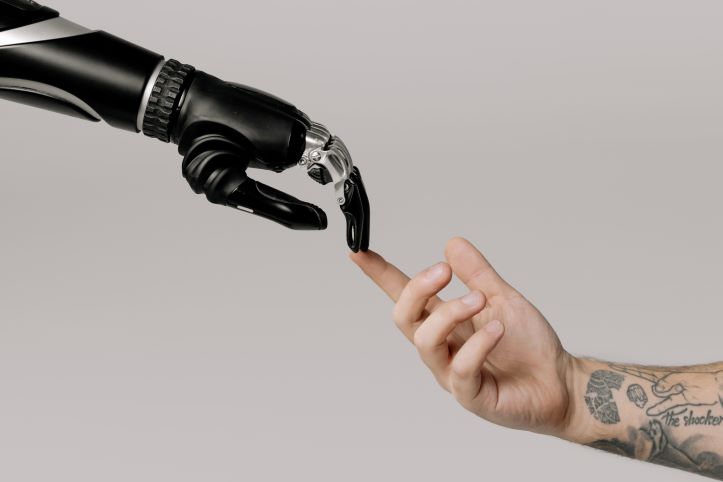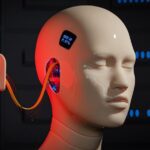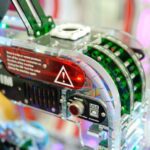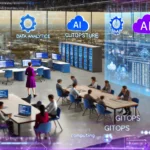Struggling with AI and wondering how to optimize AI algorithms for better performance. Welcome to a captivating exploration of enhancing AI algorithm performance. In this blog post, we’ll delve into practical strategies that hold the potential to elevate the efficiency and accuracy of your AI models. In today’s rapidly evolving digital landscape, the demand for AI-powered solutions continues to rise. Whether you’re entering the world of machine learning or refining existing models, the pursuit of precision remains a constant goal.
By immersing ourselves in the realm of AI algorithm enhancement, we unlock the secrets to transforming raw data into refined insights. These strategies are not mere techniques; they are the linchpins that unlock the full potential of your AI models.
Join us as we delve into the nuances of data preprocessing, algorithm selection, hyperparameter tuning, and architectural optimization. Through this exploration, you’ll acquire the tools to ensure that your AI creations not only meet but surpass expectations.
What is Algorithm Optimization
Algorithm optimization is the art of refining the performance of AI algorithms to achieve superior results. It involves fine-tuning various components of an algorithm to make it faster, more accurate, and resource-efficient. Think of it as tuning a musical instrument to produce harmonious melodies. By adjusting the algorithm’s parameters, structures, and settings, we aim to strike the perfect balance between precision and efficiency.
Optimizing AI algorithms isn’t just a luxury; it’s a necessity in today’s data-driven world. Improved algorithm performance leads to quicker insights, enhanced decision-making, and more responsive applications. Picture a well-oiled machine that operates seamlessly, saving time and resources. By optimizing AI algorithms, we unlock their full potential to tackle complex tasks, from image recognition to language processing, with remarkable accuracy and speed.
Misconceptions
Let’s address a common misconception: optimization isn’t about squeezing every drop of complexity out of algorithms. It’s about enhancing what matters most while simplifying what’s extraneous. Optimization doesn’t mean sacrificing accuracy for speed or vice versa—it’s about finding the optimal balance between the two. And while optimization might sound like a highly technical task, it’s accessible to anyone willing to explore and learn.

Step-by-Step on How to Optimize AI Algorithms for Better Performance
# Data Preprocessing for Improved Results
In this section, we’ll unravel the pivotal role of data preprocessing in optimizing AI algorithms. We’ll explore the significance of quality data, techniques for cleaning noisy datasets, the importance of feature scaling and normalization, and effective strategies for handling missing data.
The Significance of Quality Data
Imagine building a grand sandcastle—the quality of the sand determines the strength of the castle. Similarly, the quality of your data profoundly influences the performance of AI algorithms. Garbage in, garbage out—this adage holds true in the world of AI. Quality data is clean, relevant, and accurately represents the problem you’re trying to solve. Without a solid foundation of quality data, no amount of optimization can yield satisfactory results.
Data Cleaning and Noise Reduction
Like a skilled chef prepping ingredients, data cleaning involves removing inconsistencies, errors, and outliers that can skew algorithm results. Think of it as removing burnt bits from your dish. Noise reduction, on the other hand, focuses on minimizing irrelevant variations that hinder accurate predictions. Cleaning and noise reduction together ensure that your data is a pure reflection of reality, allowing your algorithms to learn and generalize effectively.
Feature Scaling and Normalization
Just as musicians harmonize their instruments, algorithms require harmonized features. Feature scaling and normalization ensure that features are on the same scale, preventing one dominant feature from overshadowing others. Imagine trying to compose a symphony with instruments playing at different volumes—it would be chaos. By scaling and normalizing features, we create an environment where every feature contributes meaningfully to the AI’s understanding.
Handling Missing Data Effectively
Missing puzzle pieces can render an image incomplete. Similarly, missing data disrupts the integrity of your dataset. Effective strategies like imputation—estimating missing values based on existing data—ensure that the puzzle is as complete as possible. Imputing missing data helps algorithms make informed decisions, preventing them from stumbling over gaps in knowledge.
# Select the Right Algorithm
Now we will learn the art of choosing the right algorithm for optimal AI performance. We’ll e also discuss the distinction between supervised and unsupervised learning, techniques for evaluating algorithm suitability, and the potential of ensemble methods.
Match Algorithms to Tasks
Imagine selecting the perfect tool for a task—you wouldn’t use a hammer to cut paper. Similarly, each AI task requires a suitable algorithm. Matching the algorithm’s capabilities to the task’s demands is like choosing the right brush for a painting. Whether it’s classification, regression, clustering, or recommendation, selecting an algorithm tailored to the task lays the foundation for success.
Supervised vs. Unsupervised Learning
In the world of algorithms, there are two main learning paradigms: supervised and unsupervised. Picture teaching a dog tricks with and without guidance. Supervised learning involves providing labeled data to train algorithms, while unsupervised learning allows algorithms to identify patterns on their own. Understanding this distinction is akin to recognizing the difference between following instructions and exploring uncharted territories.
Algorithm Suitability
Selecting an algorithm is like choosing the right outfit—it should fit the occasion perfectly. Evaluating algorithm suitability involves considering factors like accuracy, training time, and resource requirements. It’s like checking whether your attire matches the event’s dress code. Exploring algorithms’ strengths and limitations helps you make an informed decision that ensures both efficient and effective results.
Ensemble Methods
Bagging (Bootstrap Aggregating): Creating subsets of the training data and training multiple instances of the same algorithm, then combining their predictions for a more robust result.
Boosting: Sequentially training multiple weak learners, with each new learner focusing on correcting the errors of the previous ones.
Random Forest: Combining the concepts of bagging and decision trees, creating multiple decision trees and aggregating their predictions to enhance accuracy and reduce overfitting.
Stacking: Training multiple diverse algorithms and using their predictions as inputs for a meta-model that makes the final prediction.
Voting: Employing a majority vote or weighted average of predictions from different algorithms to make the final decision.
AdaBoost: Assigning higher weights to misclassified samples and training subsequent models to focus on these samples, gradually improving overall performance.
Gradient Boosting: Building models sequentially, each one addressing the errors of its predecessor, leading to increasingly accurate predictions.
XGBoost (Extreme Gradient Boosting): An optimized implementation of gradient boosting that incorporates regularization techniques for improved performance.
# Hyperparameter Tuning
Hyperparameters are the dials and knobs that fine-tune your algorithm’s behavior. Imagine adjusting the settings on a camera to capture the perfect shot—hyperparameters determine the behavior of your model. They influence aspects like learning rate, regularization strength, and network depth. Correctly tuning hyperparameters can be the difference between a model that performs like a maestro and one that misses the mark.
Grid Search and Random Search Techniques
Grid Search: Like systematically exploring a map, Grid Search involves defining a grid of possible hyperparameter values and exhaustively evaluating each combination. It’s like trying every flavor at an ice cream parlor to find the best one.
Random Search: Similar to a treasure hunt, Random Search involves randomly selecting hyperparameter values within specified ranges. It’s like stumbling upon a hidden gem while exploring the unknown.
Balancing hyperparameters is akin to maintaining a steady course in turbulent waters. Adjusting hyperparameters to maximize training performance might lead to overfitting—where the model fits the training data too closely and performs poorly on new data. Striking the right balance ensures that your model generalizes well to unseen data while still performing admirably on the training set.
Use Cross-Validation for Robust Results
Cross-Validation is the scientist’s equivalent of conducting multiple trials to validate results. It involves dividing data into subsets for training and testing, ensuring that the model’s performance is consistently evaluated across different data segments. Think of it as testing a new recipe with various tasters to ensure it’s a hit with everyone.
# Optimize Model Architecture
Neural network architecture is the blueprint for your AI masterpiece. Just as an artist chooses the canvas and brush sizes, your architecture defines the structure of your model. It determines how data flows through the network, influencing learning speed and overall performance. The right architecture is like a well-designed stage that brings out the best in your performers—the data.
Adjust Hidden Layers and Neuron Counts
Hidden layers and neurons are the ensemble members of your AI orchestra. Adding or removing hidden layers and adjusting neuron counts affects the network’s capacity to capture complex patterns. It’s like tuning the orchestra to achieve a perfect blend of instruments. Finding the optimal balance ensures your network can learn intricate details without getting lost in noise.
Activation Functions and Their Effects
ReLU (Rectified Linear Activation): Like a switch, ReLU turns on for positive input and remains off for negative input. It’s a simple yet effective way to introduce non-linearity and accelerate learning.
Sigmoid: Sigmoid squeezes inputs between 0 and 1, ideal for binary classification. However, it’s susceptible to vanishing gradient problems.
TanH (Hyperbolic Tangent): Similar to sigmoid but ranging between -1 and 1, TanH addresses the issue of zero-centered gradients.
Leaky ReLU: A variation of ReLU that allows a small gradient for negative input, preventing dying neurons.
Softmax: Often used in the output layer for multi-class classification, Softmax converts scores into probability distributions.
Regularization Techniques for Stable Models
L1 and L2 Regularization: Introducing penalties on large weights (L1) or squared weights (L2) discourages complex models, preventing overfitting.
Dropout: Like musicians taking breaks in a performance, dropout randomly deactivates neurons during training, reducing reliance on specific features and promoting generalization.
Batch Normalization: Balancing the output of each layer, Batch Normalization prevents exploding or vanishing gradients, enhancing network stability.
Early Stopping: Similar to ending a concert before the encore, Early Stopping halts training when validation performance plateaus, preventing overfitting.
# Leverage Hardware Acceleration
Harnessing the power of GPUs and CPUs is like having a team of sprinters and marathon runners. GPUs are adept at parallel processing, perfect for computationally intensive tasks like deep learning. CPUs, on the other hand, excel at general tasks and managing diverse operations. Choosing the right hardware is akin to assembling a balanced team that complements each other’s strengths.
Dealing with big data is like sifting through a vast library—it’s more efficient when done collaboratively. Distributed computing involves breaking down tasks into smaller chunks, assigning them to multiple machines, and aggregating results. It’s like having a team of researchers each working on a section of the library to find information faster.
Imagine having a magic wand that instantly scales your resources as needed—cloud services do just that. Cloud providers offer flexible resources that can expand or shrink based on demand. It’s like having an orchestra that can seamlessly switch between a small chamber ensemble and a full symphony depending on the performance.
Trade-offs Between Speed and Cost
Optimizing hardware usage involves striking a balance between speed and cost. Faster hardware often comes at a premium, like choosing between a sports car and a fuel-efficient sedan. While faster hardware accelerates computations, it might also incur higher costs. Finding the sweet spot depends on your project’s requirements and budget constraints.
# Continuous Learning and Updating
Think of your AI model as a fine wine—it gets better with age. Ongoing model refinement is about nurturing your creation, improving its performance over time. Just as a musician practices to master their art, your model requires consistent attention and adaptation. Regular updates ensure that your AI remains relevant, accurate, and aligned with evolving data and user needs.
Monitoring Model Drift and Degradation
Imagine a musical performance shifting out of tune—it’s jarring and undesirable. Similarly, model drift and degradation can result in inaccurate predictions. Monitoring involves comparing model performance over time and flagging deviations. It’s like tuning an instrument to maintain a harmonious melody. By recognizing and addressing drift, you ensure that your AI stays on key.
Incremental Learning Approaches
Incremental learning is like adding new verses to an existing song—it keeps the melody fresh and engaging. Instead of training from scratch, incremental learning focuses on adapting the model with new data. It’s a way of incorporating new knowledge while preserving the existing expertise. This approach minimizes resource consumption and accelerates adaptation.

Tips for Balancing Training and Deployment Phases
Balancing training and deployment is akin to rehearsing and performing on stage. Here are key tips to strike the perfect balance:
Segment Data for Evaluation: Use separate datasets for training and evaluating model performance to ensure unbiased assessment.
Regular Updates: Implement a regular update schedule to prevent models from becoming outdated.
Testing in Controlled Environments: Test updated models in controlled environments before full deployment to mitigate potential issues.
Fallback Plans: Have contingency plans in case model performance degrades unexpectedly after an update.
Conclusion
You’re ready to lead in AI’s dynamic world with data preprocessing, ensemble approaches, hardware acceleration, and continuous learning. Optimization and innovation are continual, as this trip shows. With these insights, your AI solutions can change industries and enrich lives. Create AI solutions with efficiency, precision, and adaptability by embracing excellence’s iterative nature. Your AI masterpiece—empowered, honed, and poised to change the world—is revealed.
Learn more on how to develop ethical Artificial General Intelligence.








